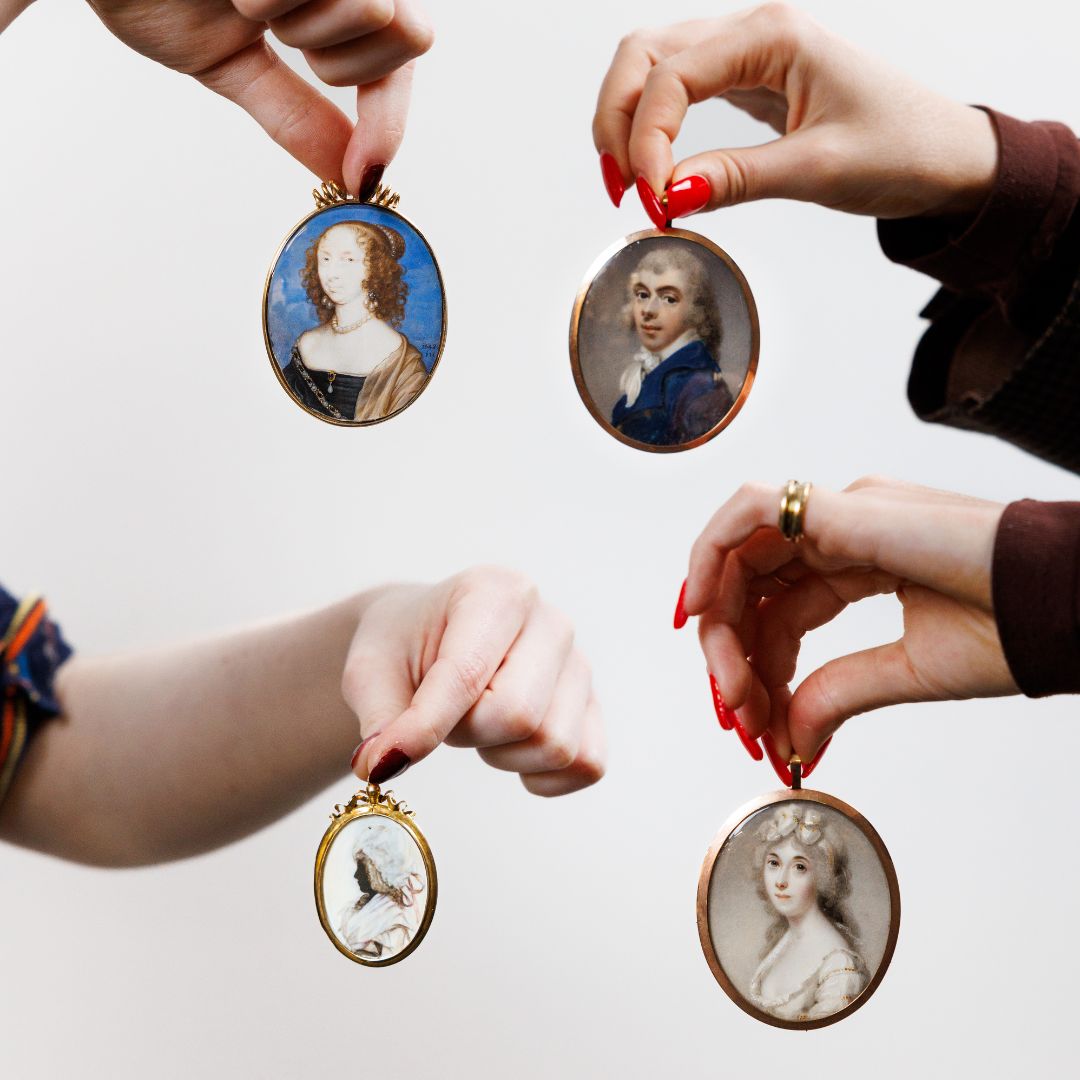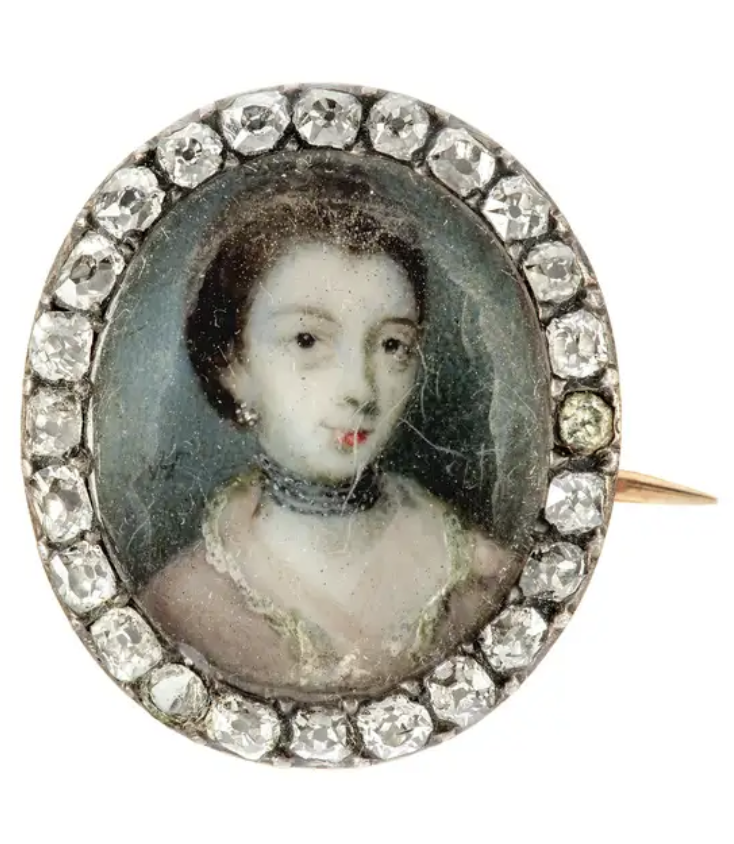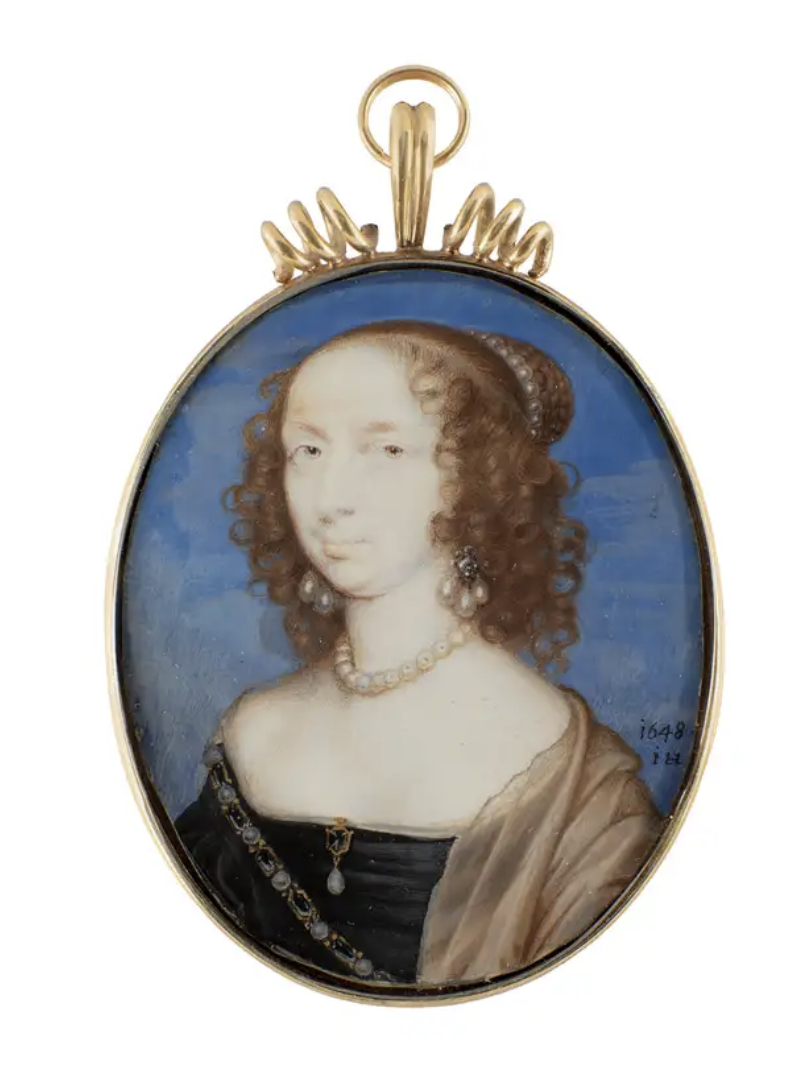Portable and precious, used as tokens of affection, gifts of admiration, mementos of loved ones, to be proudly worn on the body as jewellery or kept concealed and close to the heart for only their owner to admire, portrait miniatures have a rich and evocative history.
First popularised in courtly circles during the 16th century, with Hans Holbein credited as the first artist in Britain to paint portraits on this very small scale, miniature portraits were mostly reserved for the aristocracy. In later centuries however the tradition of miniature painting flourished, reaching its high point in the 18th century, when the fashion for small-scale portraits caught on with the burgeoning middle classes.
We are pleased to present over a dozen fine portrait miniatures in our forthcoming Old Master, British and European Pictures sale at Roseberys, and have put together a few tips to help you start your collection.
It’s all in the detail
When buying portrait miniatures at auction, be prepared to get your magnifying glass out! Not only did the best miniature painters distinguish themselves through the fineness of their brushwork and ability to capture the lustre of jewellery and fabrics worn by their sitters, artists often signed their work in very small and hard-to-spot initials, so it is worth paying close attention. Lot 79 in our upcoming sale for example is subtly signed ‘NH’, for the renowned Irish miniature painter Nathaniel Hone (1718-1784). As with larger portraits, a signature identifying an artist can add value.
Lot 79: Nathaniel Hone, RA, Miniature portrait of a lady,
bust-length, wearing a pink dress
Character counts
While it can certainly make a difference to know who painted a portrait miniature, it can be equally valuable and interesting to know more about the identity of the sitter. Having a little bit of background can add a layer of history and provenance to the portraits in your collection. The remarkable portrait of Dorothy Wheler by John Hoskins in our upcoming sale is dated 1648, which was the year the sitter got married, indicating that this portrait was likely painted on the occasion of her marriage.
Lot 77: John Hoskins, Portrait of Dorothy Wheler
Even if the sitter’s name has been lost over time, there are many handy tools to help you form an idea about their character and personality. The clothes they are wearing for example provide a useful indication of when their portrait was painted or who they were. For instance, the military uniform in lot 85, the handsome and striking portrait by Richard Crosse, identifies the sitter as an officer of the Regiment of the Foot Guards.
A matter of material
Early miniatures are often painted on vellum, a type of prepared animal skin known for its translucent quality. During the 18th century however ivory became the most popular support, as its surface was found to hold watercolour very well and was thought to brighten the portraits’ delicate colours. The ground on which a miniature is painted tells you a lot about its date.
Portrait miniatures were also very precious to their owners, and were often held in fine jewellery settings, sometimes crafted from gold and inset with gemstones. The portrait of a lady by female miniaturist Penelope Carwardine (lot 81) for example is surrounded by a border of lustrous diamonds, and was likely once proudly worn as a necklace.
Lot 81: Penelope Carwardine, Portrait of a lady,
bust-length, wearing a lace-trimmed bonnet
Another material aspect which often features in portrait miniatures is hairwork, which refers to the intricate plaiting and arrangements of locks of hair. Quite a few of the miniatures in our upcoming sale are adorned in this way. Lot 82 for example, a finely rendered portrait by an artist working in the circle of John Smart, has a geometrically latticed hairwork back.
Consider curation
Finally, due to their small scale and refined detail, miniature portraits invite close inspection and lend themselves to being presented in creative ways. When creating your collection, consider how you might display and enjoy these portraits. You could choose to keep them together in a cabinet, as they might have been in the past, or opt for a more modern way to display them, such as mounting your miniatures together in a large frame. Whichever option you choose, we recommend keeping them out of direct sunlight and, in the case of ivory miniatures in particular, away from damp areas that might cause the surfaces to warp and crack over time.
When putting together a cohesive collection it is also worth considering themes and eras that appeal to you: do you prefer the early miniatures on vellum, or are you partial to enamels? Even though miniatures are only small, there is a huge variety within this rich and interesting genre.








